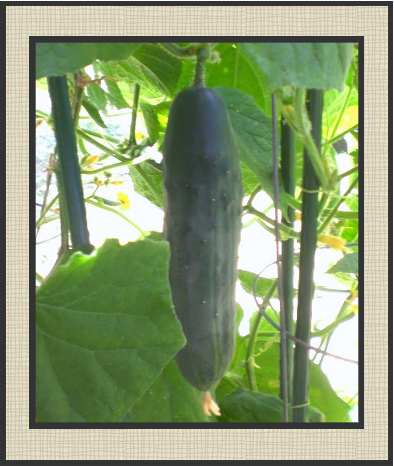Way back in February and March, I started seeds for plants that require a long growing season and need protection from the danger of frosts like tomato, pepper, and eggplant.
Many folks that came to buy plants from me also wanted things like spinach, cucumber, beans, and peas. I had to explain that I only started plants for transplant of those warm season types that needed to be started early to produce a good yield of fruit. Some of what was requested was either far too late or far too early to be set out in the garden, which are the cool season veggies like broccoli, spinach, and peas. The other requested plants, were fast growing summer crops that should be direct seeded like okra, cucumber and green beans. These should be sown now.
The key to growing summer vegetables in the Midwest is to look for a fast maturing time. Anything that takes more than 90 days to begin producing fruit should be left for more southern growers.
Don’t worry though…there are plenty of things that will grow just fine in the Midwest’s Zone 3 to 5 hardiness zone, and (in no particular order) some of them are:
~OKRA~
There are lots of cultivators of okra to choose from, all mature rather quickly. They are heat loving and drought resistant. They provide nice summer shade for plants that appreciate a break from the noon day sun…and who doesn’t?
~GREEN BEANS, CROWDER PEAS, & COWPEAS~
When choosing to grow a member of the legume family, I urge you to grow a pole variety. The bush type are determinate, which means they grow to a certain size, bear fruit and prepare to meet their maker. The pole type seem to continue to grow and produce fruit until the days get short. You will need less horizontal space and fewer plants if you grow pole type.
I would advise against growing them in an intensive gardening raised bed arrangement. I believe these would be best grown in a long one foot (or so) wide row, be it a raised bed or something in the ground…curvy or straight. In this way, I bet you could still get away with growing 4 plants per square foot…it’s just that it’s necessary to get to each side for harvesting and that was difficult in the 4X8 foot raised beds I grew them in last year.
~CUCUMBER~
Cucumber is a fast maturing plant. Different cultivators taking anywhere from
50 to 70 days to begin bearing fruit. I had the most success with the Straight Eight of the three varieties I grew last year. They are said to mature in 58 days…I could not keep up with the fruit! Plant only a few vines (I’d say one for every cucumber lover in your family), find out who else you know that loves cucumber too, and pick the fruit every day once it gets just big enough. Mature cucumbers have tough skin and huge hard seeds.

WHILE EARLY MELONS NEED LOTS OF SPACE, THEY DON’T NEED QUITE AS MUCH SPACE AS THE LONGER SEASON MELONS
~WATERMELON & MELON~
I found a few early ones. A quick search on the internet should lead you to where you can purchase the seeds of each of the mostly heirloom variety listed below. The Sugar Baby and the Minnesota Midget can be found at just about any retail store that sells seeds around here…and of course there’s always the hybrids.
I have read, recently, that cross pollination of squash or pumpkin can cause a foul tasting watermelon. I’ve never heard this before, but I’m certain it would affect the genetics of the seed and create some freak hybrid if you grew the seeds next summer. I have heard true stories of using seeds of pumpkins that were accidentally cross pollinated with squash…the seeds did not make for a tasty pumpkin. To be safe, plant your watermelon as far away from your other gourd type plants as possible.
Smaller melons can grow on a trellis. I have also seen Sugar Baby Watermelon and Cantaloupe grown on a trellis. People who do this sling the fruit, or grow it in a net bag like the kind they package onions in.
Blacktail Mountain Watermelon – 70 days
Golden Midget Watermelon – 70 days
Stone Mountain Watermelon – 60 to 80 days
Sugar Baby Watermelon – 75 to 80 days
Cream of Saskatchewan Watermelon – 80 days
Sweet Siberian Watermelon – 80 days
Jenny Lind Melon -70 days.
Green Nutmeg Melon – 80 days.
Minnesota Midget Melon – 75 days
Emerald Gem Melon – 80 days
~CORN~
Corn takes a lot of space, and is prone to pest infestation (the popcorn varieties – not so much). The sweet kind is nutrient demanding, and there are other things to consider when planting corn. So much so, I could do a two page blog post just on corn. I may well do such a post, but not today.
Thanks to Monsanto, most of our corn seed selections has some GMO contamination. I’m not as afraid of the GMO corn as I am the RoundUp that our corn supply is soaked with. My advice is, if you’ve got to have sweet corn, better to grow it yourself.
Start with a small 4X4 corn bed and learn from growing this year.
Sew a variety that is Sugar Enhanced (SE), not Super Sweet (SH2)…stay tuned to find out why.
~ SUMMER SQUASH~
Just about all summer squash cultivators mature quickly. You’ll find some that take only 45 days to reach maturity, some that take 65 days…and many others that fall somewhere in between. Squash is another type of vine vegetable that grow well on a trellis.
Sweet potato, pumpkin, and soybean may also be started now.
One quick tip: To speed germination, soak seeds over night. I use one cup filtered water to which I add 1 1/2 teaspoons of 3% hydrogen Peroxide.



